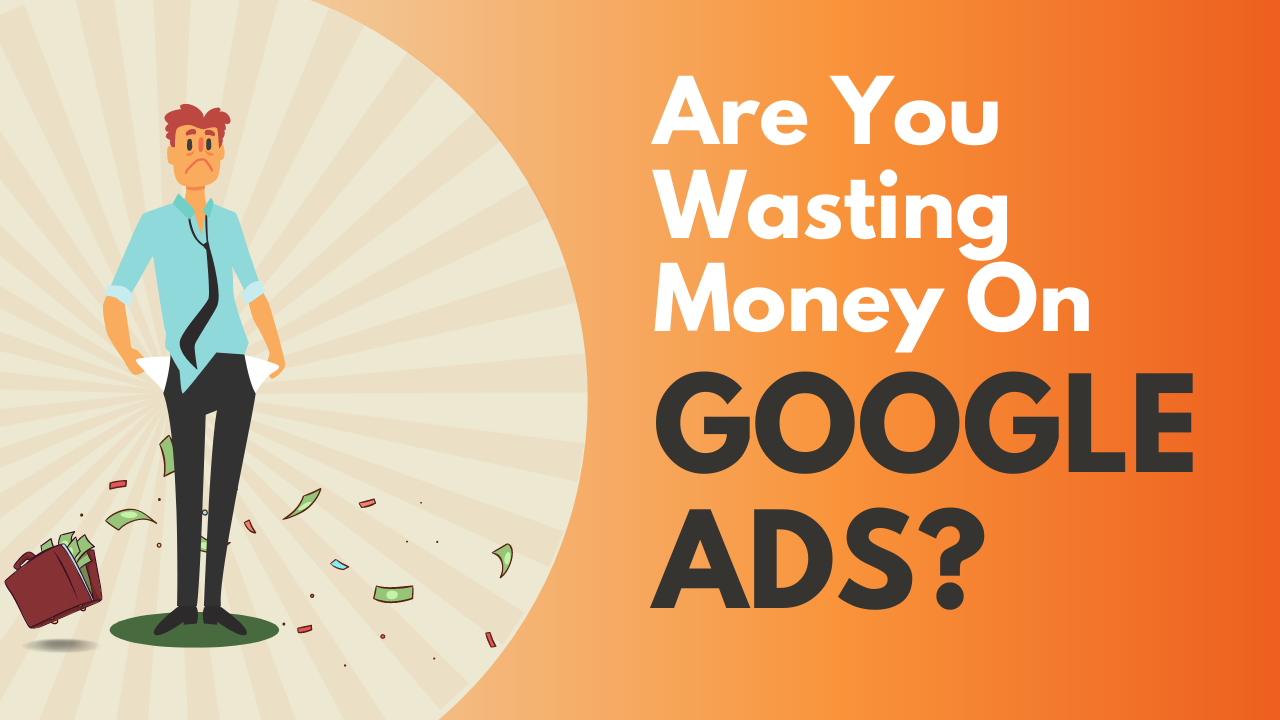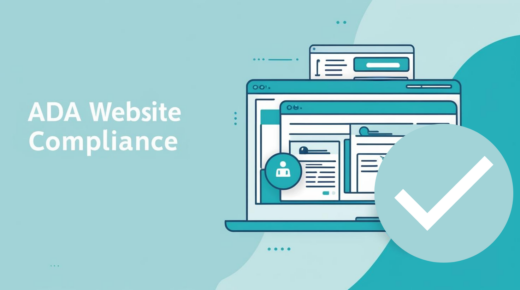Are You Wasting Money On Adwords?
Adwords, or Google Ads is a pay-per-click (PPC) online advertising platform that businesses use to promote their products or services to internet users. You have the option to have your ads placed in the Google Search Network and / or Google Display Network. In a pay-per-click advertising model, you pay when your ad is clicked.
The Google Search Network includes the Google search results pages as well as those of its Search Partners, the non-Google search and directory sites that show Google ads. The search partners expand the space for search ads placement beyond the Google search results pages.
The Google Display Network includes over two million websites, apps and videos that agreed to show Google Ads to at least 90% of Internet users worldwide. The Display network also includes Google websites such as Google Finance, Blogger, Gmail and YouTube.
In addition to its massive network of ad placement sites, Google Ads is continually offering new features that help advertisers to customize their ads, target the right audiences and control their budgets. However these positive features of Google Ads are not easy to understand for some advertisers, they end up losing money on the platform.
Are You Wasting Money On Google Ads?
Millions of businesses are using Google Ads to advertise their products and services online. They would not continue using Google Ads if they don’t get their money’s worth. Some companies spend up to $50 million a year on Google Ads.
If you’re losing money on your Google ads, it’s most likely that you’re not using it correctly. You could be making some or all of the following mistakes.
1. Not Customizing Ads Settings for Your Business
Google Ads has a lot of default settings designed to maximize reach. If that’s not the objective of your campaign and you didn’t review and customize the settings, you could be paying for many clicks by people who don’t need your product or services.
For example, ad campaigns are set to both search and display by default. Your ads will show in both the Google search and display networks. However, the search and display networks have different types of users.
Your ad on the search network will be seen by people who are actively searching for the product or services you offer. They are already past the awareness stage.
On the other hand, your ad on the display network can be seen by people who can be your prospects but are on the site for other reasons. They are not searching for your product or services.
The most common mistake of new Google Ads users is targeting both search and display networks with the same ad campaign. You need to have different sets of ads and landing pages for each network because the search network is completely different from the display network.
You’re wasting money on the network where your ad is not relevant to the site users.
2. You Send People Who Click On Your Ads to Your Homepage
You’re losing money if people who click on your ads are redirected to your homepage. Your homepage provides general information about your business. It is not a continuation of the message on your ad that made them click your link. The website visitor might just leave and look at another ad.
So, you need a landing page that is focused on converting the visitor into a customer. The landing page must address what the potential customer needs to know before buying the product or services you offer.
Your landing page should look like an extension of your Google Ad. People who visit your landing page after clicking your ad should immediately know that they came to the right website because of the similarity in layout, content design and keywords.
3. Not Using the Right Types of Keyword Matches
Keyword match types tell Google how restrictive it should be in deciding to what search queries your keywords can match.
There are three keyword match types: Broad Match, Phrase Match and Exact Match. Google had stopped using Modified Broad Match in February 2021.
Broad match,the default keyword match type is the least restrictive while an exact match is the most restrictive. If you don’t choose a match type or you choose a broad match, your ad can match to related searches that don’t include any of your keywords.
According to Google’s example, an ad with “low-carb diet plan” broad match keywords can show to people searching for “carb-free foods”, “low-carb diets”, “low calorie recipes” or “Mediter ranean diet books”.
So, if your goal doesn’t include people searching for terms related only to your keywords, you’re wasting money if they click your ads.
Usually, you won’t get the match types that will work for you the first time you run your ad. Find the right keyword match types and avoid losing money by checking the results of your campaigns as early as you can.
4. Low Quality Score
Quality Score is Google’s rating from 1 to 10 (best) of the quality and relevance of your ad campaign. The score depends on many factors, including expected click-through rate (CTR), ad relevance, landing page experience and Google Ads account historical performance.
For example, your investigation shows that your quality score is pulled down by the below average rating of your ad campaign’s landing page experience. Landing page experience measures what happens when the people who clicked your ad get to your landing page. If they were not convinced to click on your call-to-action (CTA), you have lost the money you paid for your ad clicks and for the ad preparation.
AdRank and Ad Position
Quality Score is one of the factors that determine Ad rank. In the Google Search and Display Networks, Ad Rank = Bid × Quality Score. If you have a low quality score, you have to bid higher to improve your Ad Rank.
Ad Rank is important because it determines your ad position or the order of your ad in the auction results. If your ad position is “1”, the highest position, it will be the first ad to be placed on the search result pages and other ad placement sites.
If your competitors’ ads are included in the auction results and rank higher than your ad, you lose the chance to be seen first by your common target audience.
On the other hand, if you don’t aim for the top ad position, you can reduce your bid and save money.
5. Inadequate Research to Understand Your Target Audience
You advertise to persuade your target audience to take a specific action, whether it’s to buy your product or to try the new services you offer. Through your ad, you attempt to engage and influence your target audience.
You’re losing money if you can’t effectively connect with your target audience. They have clicked your ad but you were not able to convert them into paying customers or subscribers to your site. You’ll have low to zero ROI.
That’s why research is important to fully understand the behavior and interests of their target audience before planning your ad campaign. What are the types of online sites that your target audience frequently visits? What are the words or phrases that they will most likely use to search for your products or services?
You also have to look at your successful competitors’ ads. What keywords or phrases do they use?
You may use Keyword Planner and other research tools to find the relevant keywords or phrases for your business.
6. You’re not testing and tracking conversions
There is no standard way of doing a Google ads campaign. You have to test different ads and track the conversions to figure out the most effective way for your business.
So, you could lose money in some ads that you did not test because you thought that based on your experience and knowledge it’s the best ad for your campaign.
Test as early as you can to catch any problems sooner and reduce your losses to a minimum. Even after you have created your winning campaign, continue creating new ads or changing settings and test again.
You also have to keep in mind that Google is constantly introducing new features that become part of your default settings. Would it be appropriate for your ad campaign? You’ll know by the results of your test.
7. Not retargeting
According to a study, 92% of customers don’t purchase on their first visit to a website. Some customers still need more information about your product or services before they make a decision. The more expensive and complex your product or services, the longer it might take your potential customers to decide whether to purchase or not
To ignore them and search for new audiences to target would be wasting what you’ve already spent for their clicks on your ad. You’re also losing potential customers that studies show are easier to convert than new audiences.
You’ll need to retarget them with new ads.
What is retargeting?
Retargeting is one of Google Ads’ features. It uses tracking codes that you set up to track people who visited your website, usually the landing page, but did not make a purchase, download a file, or perform the activity you ask them to do.
Retargeting allows you to follow your past visitors online when they visit the sites in Google’s search and display networks. Based on your setup, Google ads can show them your ads that hopefully will convince them to take another look at what you offer and perform the activity you ask them to do.
8. Not Using Ad Extensions Properly
Google ad extensions are additional pieces of information and clickable CTAs that you can include in your ads. You can choose the ad extension types that would be most suitable for your advertising goal in the set up menu.
Some examples of ad extensions are: location information, call buttons, links to your landing page or other websites and mobile app. Extensions expand your ad, make it more visible. They also improve CTR and make valuable interactions with potential customers faster.
For example, a phone number on your ad would call the attention of potential customers who need immediate information about your products or services through a phone call.
So, extensions give more value to your ad if you know how to use them. However, using the wrong or irrelevant ad extensions could reduce your CTRs and attract the wrong people to click your ads. You pay for clicks that are not likely to convert into sales because the potential customer was looking for something else.
It is also important that your business can provide the needed support for the traffic and inquiries resulting from your ad extensions. If your ad has your phone number, make sure that there is always somebody to immediately answer the phone when it rings.
Most callers don’t have the time to stay on the line to wait for your reply. They would hang up and look for another service provider. You end up wasting the money spent on your ad click.
How to avoid wasting money on Google ads
The number one reason why advertisers are wasting money on Google ads is their failure to use the platform properly. Unfortunately, it’s not easy to understand how Google ads work. You need not only to understand how to setup Google ads but also the time to manage your campaign.
Learn how to use Google ads
It’s not enough to read instructions on the Google ads website and attend webinars.
You also need to experience using the platform to understand the ins and outs.
Time and skills to manage your advertising campaign
Managing your Google Ads account is challenging. It requires attention, time and skills to find the right keywords, test your ad, track results and your competitors, and tweak your ads before you find the right one for your business and target audience.
Learn how to use the various Google ads tools to make your work easier and faster. It’s important to discover any mistakes early to keep wasting your ads budget to the minimum.
Final Thoughts
Yes, Google Ads is a complex advertising platform to use. However, you can’t ignore Google Ads because it is a powerful advertising platform for your business. Google ads’ main advantage over other online advertising platforms is its massive reach.
According to Net MarketShare, over 72% of online searches worldwide use Google.
Avoid committing the costly mistakes mentioned by taking the time to learn and experience how Google Ads works.





